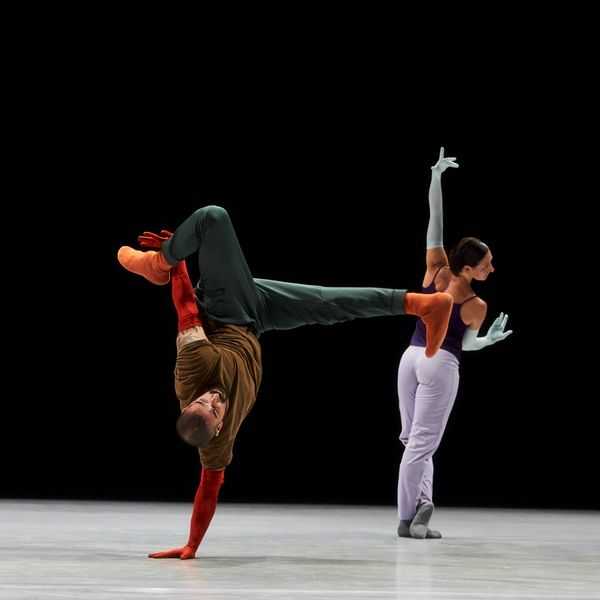7 Reasons to Love William Forsythe's Quiet Evening of Dance
William Forsythe is bringing his multi-faceted genius to New York City in stripped down form. His “Quiet Evening of Dance,” a mix of new and recycled work now at The Shed until October 25, is co-commissioned with Sadler’s Wells in London (and a slew of European presenters).
As always, Forsythe’s choreography is a layered experience, both kinetic and intellectual. This North American premiere prompted many thoughts, which I whittled down to seven.
Watching them work
Forsythe introduced the evening by thanking the audience for coming “to watch us work.” And the work is fascinating. The first half of the program, several duets in near silence (bird twittering plus Morton Feldman’s “Nature Pieces from Piano No. 1”), draws your attention to the deliciously erratic movement. The dancers make you care about each attenuated shape, each elbow jab into negative space, each sly-but-energized glance at a partner. Although they never settle into unison, they seem to ride the same electric current. As the pace speeds up, slows down, goes haywire, they focus on this shared current, not on the audience.
Watching them play
In the second half, with music by the 18th-century composer Jean-Philippe Rameau, the mode shifts from work to play. Now, they open up to us, the audience. They are dancing for us, and that conspiratorial wink between them is gone. Or is it? As the 10 dancers careen around the stage in trios or larger groups, this section seems to be a sly spoof of performance itself.
It’s about the dancers
The dancers have the freedom to be entirely themselves. In an interview included in the program notes, Forsythe says, “The dancer is absolutely everything.” We get to imbibe the assured fluidity of Jill Johnson, the sometimes comic buoyancy of Brigel Gjoka, the impish quality of Ayman Harper. Forsythe trusts the dancers to take the material and run with it—briefly. So we see short spurts of improvisation that might take a dancer skittering around the room in escape from a tight duet.
 Jill Johnson and Brit Rodemund
Jill Johnson and Brit Rodemund
Mohamed Sadek, Courtesy The Shed
A space for seeing
The intimate yet expansive Griffin Theater allows us to really see this complex dancing and the choreography. Many of Forsythe’s productions at Brooklyn Academy of Music, whether with Ballett Frankfurt or The Forsythe Company, have incorporated text, video, acting and/or large props. (See BAM digital archive to trace his productions there since 1998.) Those works were thrilling for what one might call big edginess. But with “Quiet Evening,” Forsythe has returned to pure dance. (Okay, I know that’s a term from the ’70s, but I happen to find it exciting when dance itself surges into the foreground.)
Meshing/messing with a b-boy
Forsythe is a master at integrating different genres into his choreography. This time, Rauf “Rubber Legz” Yasit, with his own brand of b-boying, contributes extremes of pretzelization—different from, yet compatible with, Forsythe’s own extremes of balletic torque. In duets, Yasit helps create a symbiotic bundle of oddly tangled limbs.
Non-binary costuming
The costumes become more colorful as the evening progresses, with bright socks covering sneakers and equally bright long-sleeved gloves covering fingers. The gender-neutral aspect of these outfits is partly what puts the production into the post-modern category.
It’s ongoing
“This is not done.” This is what Bill told me at a post-performance gathering on Tuesday night. The dance changes a little bit every night. He is not into making masterpieces. He is into following his curiosity and the dancers’ ability to focus on a string of mercurial tasks. Like Forsythe’s entire artistic life, it’s about process.




